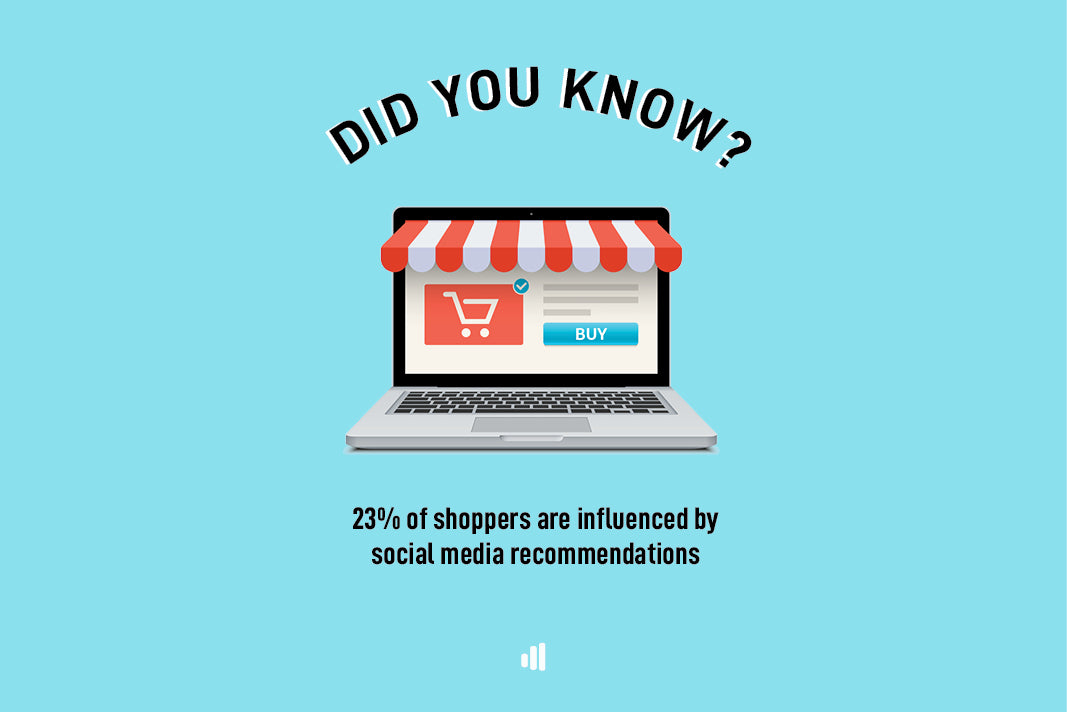Have you ever purchased an item after seeing it mid scroll on The ‘Gram? Welcome to social commerce, the debated future of online shopping.
Social commerce isn’t all that different to traditional e-commerce trading – at its core, it’s really all about getting back to basics and simplifying the sales funnel process for both brands and consumers. Key statistics that surround the newer funnel style include:
- 23% of shoppers are influenced by social media recommendations
- 51% of millennials are likely to make a purchase over social media.
- 84% of shoppers review at least one social media site before purchasing

You might want to blame Millennials (you know, soon to be the world’s biggest buying power) for this one, but the rise of social media and it’s presence in our day to day lives has also resulted in a pathological need for instant gratification – we like it, and we want it right now. So how has this contributed to the development of social commerce?
What Is Social Commerce?
Think of social commerce as simply buying an item online directly from a business or brand’s social media accounts. When compared to traditional e-commerce and online trading, the process usually requires less steps, is more streamlined, and (ideally) a quicker transaction for the customer.
The magic of social commerce is that because it is usually quicker, the likelihood of losing a customer to the dreaded “abandoned cart” is much lower. Bonus points? Because they are using their social media accounts to do said shopping, they’ve usually also consented to receiving market emails from your brand or business. What this translates to for marketers is a way forward for follow up style email marketing pitches, new product launches, and paid retargeting advertisements. Hang on, all of this from just one click? Welcome to social commerce.

In the field, some of the most common examples of social commerce are:
- “Buy” buttons on posts on social media
- Shoppable stories
- Chat boxes to query about products
- Facebook Marketplace where members can buy and sell products in local areas
- Buyable Pins to sell products directly on Pinterest
For indicators of changing consumer behaviour, look to major online shopping events like Black Friday and Cyber Monday. While the traditional Boxing Day sales are unlikely to go away anytime soon, it looks like social commerce and the trends surrounding it aren’t either.
How To Take Advantage Of Social Commerce
Utilizing the power of social commerce requires a solid content marketing strategy, particularly if you are looking to craft content that is “shoppable” – meaning images, video or text that you’re able to use as promotional material for your products or services.
Producing your own quality, consistent and on brand content takes time, effort, experience and resources – and you’re not alone if you can’t quite commit to that. Avoiding content marketing all together may actually be doing your brand a disservice, but thankfully – investing in a solid content marketing strategy has never been easier.
Here at Content Hive, producing top quality digital content is exactly what we do best. We have itemised a list of digital content services, and allocated credits next to each of these. This means that each month, you can use your credits with us to produce digital content such as social media posts, blog articles, videos and even animated Instagram stories.
We believe that this model means we can produce high quality content in faster than normal delivery times. It also means that because you have a monthly credit, you are going to want to make sure you use these up – and so do we – meaning that your digital content is always consistent.
If you aren’t quite sure where to start on your content marketing journey and would like to speak to a professional, why not book in a free discovery call with us at Content Hive today to discuss how we can get your brand buzzing online.


